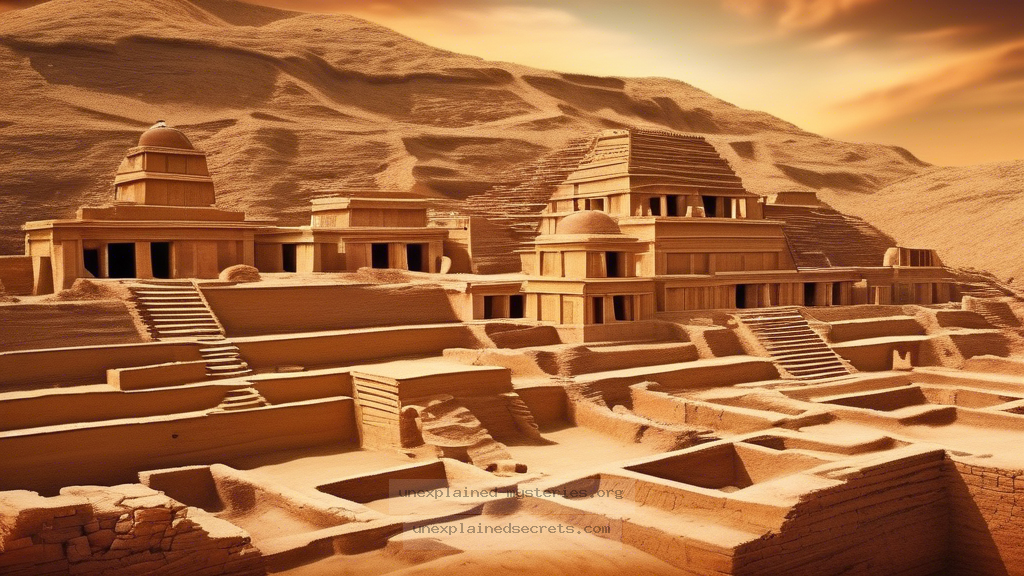What Happened to the Mysterious Civilization of the Indus Valley?
What Happened to the Mysterious Civilization of the Indus Valley?
The Indus Valley Civilization, one of the world’s oldest urban cultures, thrived in the northwestern regions of South Asia from around 3300 BCE to 1300 BCE. Despite its significant advancements in urban planning, architecture, and social organization, this civilization mysteriously declined and eventually vanished. The question of what happened to this remarkable society not only captivates historians and archaeologists but also prompts discussions on the resilience of civilizations and the factors that contribute to their downfall. This blog post delves into the enigmatic fate of the Indus Valley Civilization, exploring its rise, achievements, decline, and the ongoing investigations aimed at uncovering the truth behind its disappearance.
Historical Context of the Indus Valley Civilization
The Indus Valley Civilization (IVC) emerged around 2500 BCE, contemporaneous with other ancient civilizations such as Mesopotamia and Ancient Egypt. Spanning modern-day Pakistan and northwest India, the IVC was distinguished by its advanced urban centers, including Harappa and Mohenjo-Daro. These cities featured sophisticated drainage systems, standardized weights and measures, and a writing system that remains undeciphered to this day, which reflects a high level of social organization and governance.
The civilization’s economy was primarily based on agriculture, supplemented by trade with neighboring regions. The people of the IVC cultivated crops like wheat and barley, and they domesticated animals, which supported their urban lifestyle. However, despite their notable advancements, the civilization experienced a gradual decline starting around 1900 BCE, leading to its eventual disappearance.
Core Theories Behind the Decline
Numerous theories have emerged to explain the mysterious decline of the Indus Valley Civilization. These theories can be broadly categorized into environmental, economic, social, and political factors.
- Climate Change: Evidence suggests that climate change may have played a significant role in the decline of the IVC. A shift towards arid conditions could have reduced agricultural productivity, leading to food shortages.
- Earthquakes and Natural Disasters: Geological studies indicate that the region is seismically active. Major earthquakes could have destroyed infrastructure and disrupted trade networks, contributing to societal collapse.
- Declining Trade Routes: The IVC thrived on trade with Mesopotamia and other regions. A decline in trade routes due to political instability or environmental factors may have weakened the civilization.
- Social Unrest: Internal strife, possibly due to resource scarcity, could have led to social unrest and fragmentation of the society.
Environmental Implications and Evidence
Recent archaeological findings have shed light on the environmental conditions that may have led to the decline of the IVC. Studies of sediment cores from the region reveal significant climatic changes during the period of the civilization’s decline. These changes included a reduction in monsoon rains and increased aridity, which likely devastated agricultural production. This would have had a cascading effect on food security and the overall economy.
Additionally, the presence of archaeological evidence of dried-up riverbeds and shifting waterways suggests that the region experienced significant hydrological changes. The Ghaggar-Hakra river system, once thought to have supported the IVC, may have dried up, leading to the abandonment of major cities. The exploration of these environmental factors is crucial for understanding the cause of the civilization’s decline.
Archaeological Evidence of Urban Decline
The archaeological record provides critical insights into the decline of the Indus Valley Civilization. Excavations at sites like Mohenjo-Daro and Harappa show evidence of urban decay. The once-thriving cities were characterized by the abandonment of public buildings, reduced material culture, and a decline in population density. Artifacts such as pottery and tools indicate a shift in production and consumption patterns, suggesting that the society was struggling to maintain its previous levels of economic activity.
Moreover, the presence of dilapidated structures and the lack of maintenance in public facilities point towards a breakdown in social organization. This urban decline is further supported by comparative studies with other ancient civilizations that experienced similar patterns of collapse due to environmental and social factors.
Alternative Perspectives on the Decline
While environmental factors are widely considered, some scholars argue that the narrative of decline may be overly simplistic. Alternative perspectives suggest that the IVC did not experience a sudden collapse but rather a gradual transformation. Some researchers propose that the civilization fragmented into smaller, localized communities that continued to thrive in various forms following the decline of urban centers.
This view challenges the traditional narrative of a singular, catastrophic event. Instead, it emphasizes the adaptability of human societies in the face of challenges. Evidence from later historical periods indicates that cultural and technological practices of the IVC persisted in the region, influencing subsequent civilizations.
Common Misconceptions and Clarifications
Several misconceptions surround the Indus Valley Civilization and its decline. One common belief is that the civilization was completely erased or destroyed. In reality, archaeological evidence shows that while urban centers were abandoned, the people likely migrated or assimilated into surrounding cultures.
Another misconception is that the civilization’s writing system, which remains undeciphered, indicates a lack of communication or records. On the contrary, the existence of seals, inscriptions, and weights suggests a complex system of trade and administration. The inability to decode the script does not imply a lack of sophistication.
Investigating the Indus Valley Civilization Today
The investigation into the Indus Valley Civilization continues, with archaeologists employing advanced technologies and methodologies. Remote sensing, ground-penetrating radar, and satellite imagery are increasingly used to uncover buried sites and analyze ancient landscapes. These technologies allow researchers to explore areas that were previously inaccessible, revealing potential new sites that may offer insights into the civilization’s expansion and decline.
Collaborative efforts between institutions across the globe have also enhanced the understanding of the IVC. This interdisciplinary approach brings together archaeologists, environmental scientists, and historians, fostering a more holistic view of the civilization’s complexities.
Future Developments and Ongoing Research
The future of Indus Valley research looks promising, with ongoing excavations and studies aimed at revealing more about this enigmatic civilization. Key areas of focus include:
- Deciphering the Script: Efforts to decode the Indus script continue, with linguists and cryptographers exploring potential relationships with known languages.
- Climate Studies: Ongoing climate research seeks to understand the long-term environmental conditions that affected the region, enhancing the narrative of sustainability and resilience.
- Genetic Studies: Advances in ancient DNA analysis may provide insights into the migration patterns and genetic makeup of the people of the IVC.
Conclusion: Understanding the Legacy of the Indus Valley Civilization
The mysterious decline of the Indus Valley Civilization remains an intriguing subject of study, reflecting the complexities of human societies. As research continues to evolve, it becomes increasingly clear that the narrative of decline is multifaceted, influenced by environmental, social, and economic factors. Understanding what happened to this remarkable civilization not only sheds light on their achievements but also provides lessons on resilience and adaptation in the face of change.
As we move forward with ongoing research and exploration, the Indus Valley Civilization serves as a testament to human innovation and the enduring impact of ancient cultures on contemporary society. The quest to uncover the truth behind its disappearance continues to inspire scholars and enthusiasts alike, keeping the legacy of this extraordinary civilization alive.
Other Articles
Recent Posts
- What Happened to Flight MH370? The Conspiracy Theories That Still Haunt Us
- What Secrets Lurk Within the Walls of the Infamous Trans-Allegheny Lunatic Asylum?
- What Evidence Supports the Existence of Bigfoot in the Pacific Northwest?
- What Happened to the Indus Valley Civilization? Unraveling the Mysteries of Ancient Urban Life
- Can Telepathy Be Scientifically Proven Through Laboratory Evidence?







